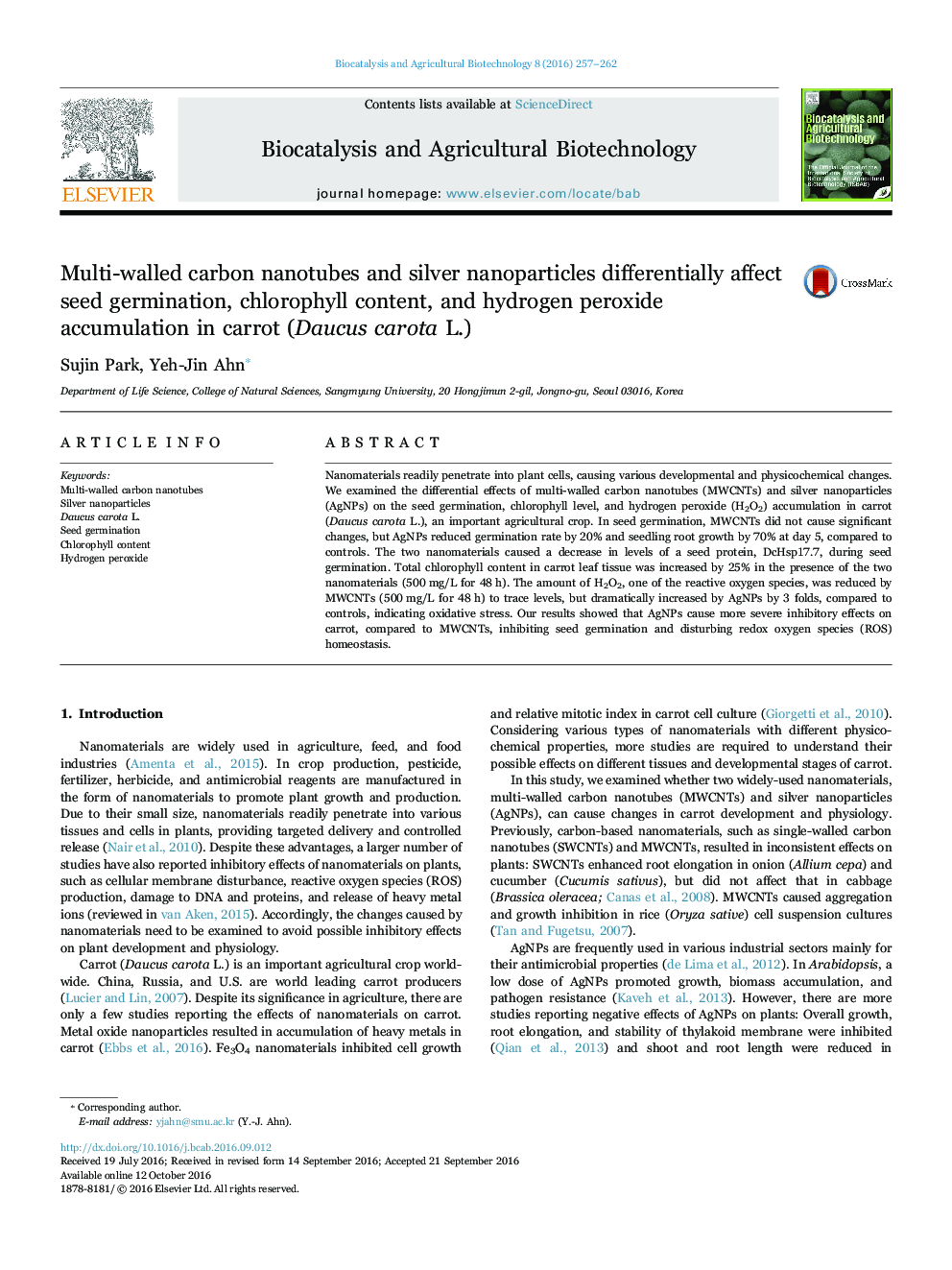| Article ID | Journal | Published Year | Pages | File Type |
|---|---|---|---|---|
| 8406210 | Biocatalysis and Agricultural Biotechnology | 2016 | 6 Pages |
Abstract
Nanomaterials readily penetrate into plant cells, causing various developmental and physicochemical changes. We examined the differential effects of multi-walled carbon nanotubes (MWCNTs) and silver nanoparticles (AgNPs) on the seed germination, chlorophyll level, and hydrogen peroxide (H2O2) accumulation in carrot (Daucus carota L.), an important agricultural crop. In seed germination, MWCNTs did not cause significant changes, but AgNPs reduced germination rate by 20% and seedling root growth by 70% at day 5, compared to controls. The two nanomaterials caused a decrease in levels of a seed protein, DcHsp17.7, during seed germination. Total chlorophyll content in carrot leaf tissue was increased by 25% in the presence of the two nanomaterials (500Â mg/L for 48Â h). The amount of H2O2, one of the reactive oxygen species, was reduced by MWCNTs (500Â mg/L for 48Â h) to trace levels, but dramatically increased by AgNPs by 3 folds, compared to controls, indicating oxidative stress. Our results showed that AgNPs cause more severe inhibitory effects on carrot, compared to MWCNTs, inhibiting seed germination and disturbing redox oxygen species (ROS) homeostasis.
Keywords
Related Topics
Life Sciences
Agricultural and Biological Sciences
Agricultural and Biological Sciences (General)
Authors
Sujin Park, Yeh-Jin Ahn,
